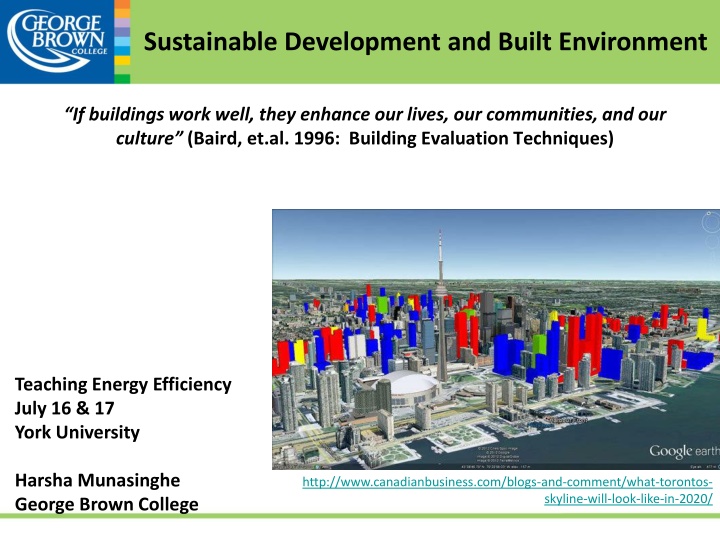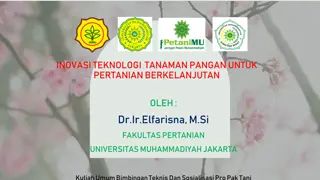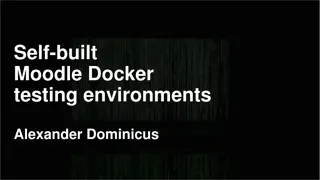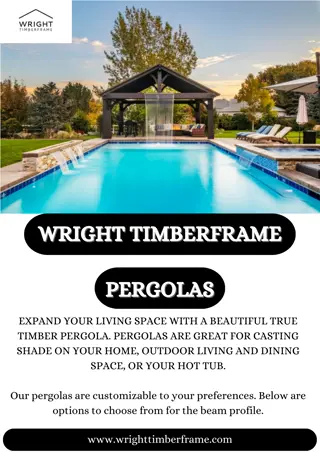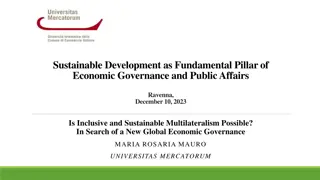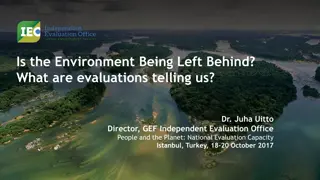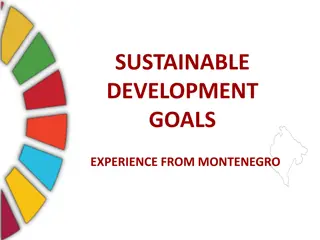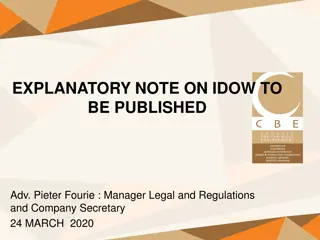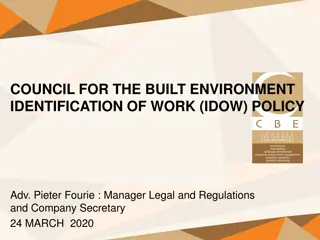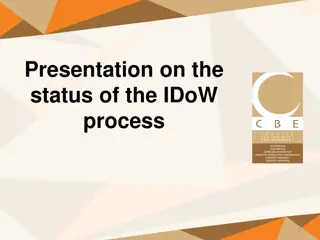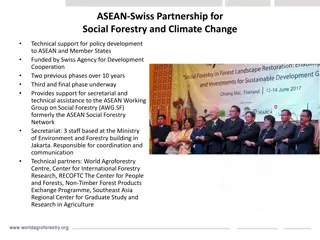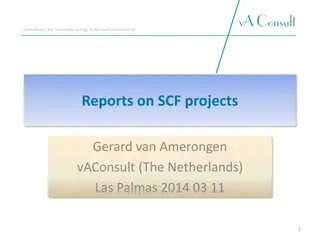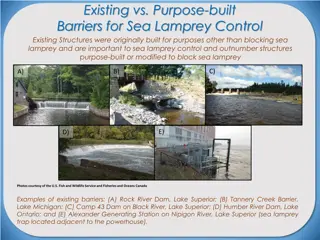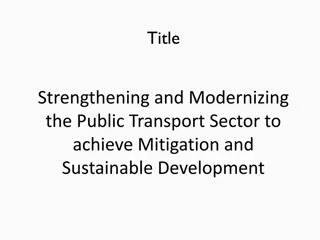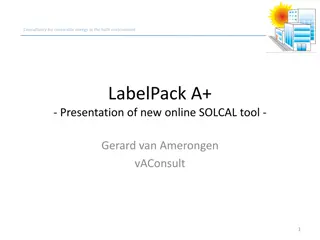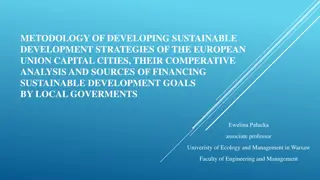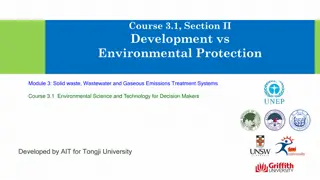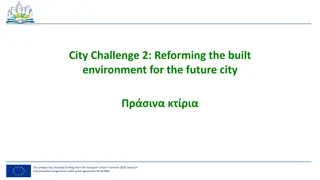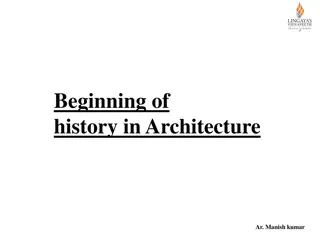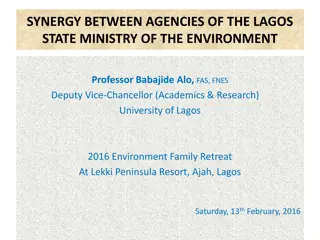Sustainable Development and Built Environment Course Overview
Explores the intricate relationship between development, the environment, and economics in the context of sustainable urban planning. Topics include environmental challenges, green building trends, energy efficiency, community planning, and case studies on sustainable development strategies. Students will analyze, discuss, and propose solutions for creating environmentally friendly built environments. The course culminates in assessments and presentations covering various aspects of sustainable development practices.
Download Presentation

Please find below an Image/Link to download the presentation.
The content on the website is provided AS IS for your information and personal use only. It may not be sold, licensed, or shared on other websites without obtaining consent from the author.If you encounter any issues during the download, it is possible that the publisher has removed the file from their server.
You are allowed to download the files provided on this website for personal or commercial use, subject to the condition that they are used lawfully. All files are the property of their respective owners.
The content on the website is provided AS IS for your information and personal use only. It may not be sold, licensed, or shared on other websites without obtaining consent from the author.
E N D
Presentation Transcript
Sustainable Development and Built Environment If buildings work well, they enhance our lives, our communities, and our culture (Baird, et.al. 1996: Building Evaluation Techniques) Teaching Energy Efficiency July 16 & 17 York University Harsha Munasinghe George Brown College http://www.canadianbusiness.com/blogs-and-comment/what-torontos- skyline-will-look-like-in-2020/
COURSE DESCRIPTION Creates an understanding of the links between development, environment and economics Investigates environmental problems caused by development Explores current issues in the built environment and economics The Gherkin, London (Google.ca) Examines sustainable development, resource use and economic strategies Delivered through case studies Bridging course from Diploma to Degree
Course Outcome Define the concepts of development and environmental sustainability; Describe and compare the variety of environmental problems and their underlying causes and subsequent impacts; Classify processes that generate social and environmental change; Assess the potentials and limitations of environmental planning and management; Develop and recommend strategies to steer sustainable urban environmental planning. Sharing is caring! Space Sharing is sustainable! http://onlyfunnyjokes.com/bestoftheweb/2008/06/26/the- stupid-engineeer-awards-great-examples-of-really-bad- construction/
Week Topic / Task Outcome(s) Content / Activities Resources Introduction : Built Environment and Community Built environment and Sustainable Development Case Study: Sustainable community planning Current trends: Green building and Bio-mimicry Energy and Building Design Course outline, GBC Policy, Handouts 1 1,2 Group discussion Class activities Introduction to Assignment I Class activities Introduction to Assignment III Class activities Discussion on Assignment I & III Class activities 2 1,2 Handouts, lecture 3 2, 3,4 Handouts, lecture 4 2,3,4 Handouts, lecture 5 4,5 Handouts, lecture 6 Case study: Energy modeling 1,2,3,4,5 Class activities Lectures, Presentations Case study: Renovated built environments / Midterm Exam Submission of Assignment I Introduction to Assignment II 7 1,2,3,4,5 Lectures, Presentations 8 9 INTERSESSION WEEK Group Discussion Submission of Field Trip Report Discussion on Assignment III Class activities Class activities Field trip to Evergreen Building Renovation & Ergonomics Urban environments 1,2,3 10 1,2,3,4,5 Handouts and presentations 11 1,2,3 Handouts and presentations 12 Indoor quality and Health 3,4,5 Handouts and presentations Case study: Building in operation Case study: Post occupancy survey Case study: Economic impact of environment / Final Exam Please note: this schedule may change as resources and circumstances require. Class activities Student presentations 13 1,2,3,4,5 Handouts and presentations CN Tower, Toronto Handouts and presentations 14 1,2,3,4,5 Student presentations 15 1,2,3,4,5 Handouts and presentations
Environment and Community Building is more than the basic Shelter: Utilitarian art & Visual art, shaping space for human use and to express ideas Expresses identity, culture, Represents the location and considered as an extension to nature Vitruvius: Firmness, Commodity and Delight The Primitive Hut Abbe Marc-Antonie Laugier (www.arch.ttu.edu/people/faculty/buelin ckx_h/Spring2008/
Why build? Built environment as enforcing an order desirable to the society Availability of resources: materials, know-how What was available in the immediate surroundings How to assemble the available materials together Did we all follow the same principles? (Google.ca)
Diversity and Placelessness Religious buildings to elevate human spirit State buildings to show strength Public buildings to create communal feelings Commercial buildings to attract customers Residential buildings to facilitate warmth and living Society evolves and diversifies thus demanding various built forms Buildings for wants or needs
Built Environment for whom? Need of an integrated approach Use of multi-criteria analysis Need of a robust product that could evolve Sky Park Singapore Use of a wholesome approach to teach the practitioners and the society
